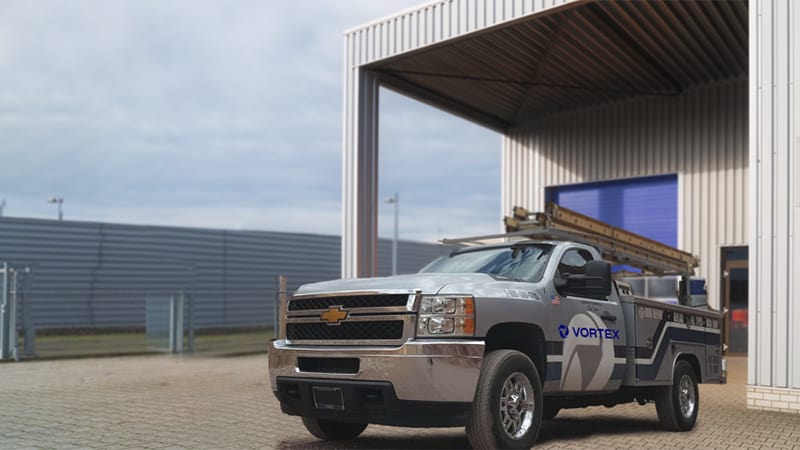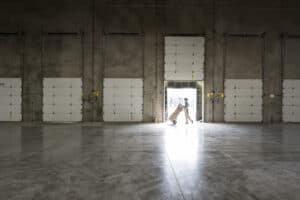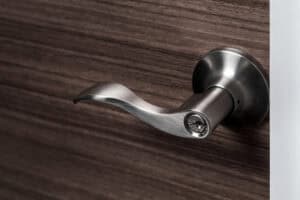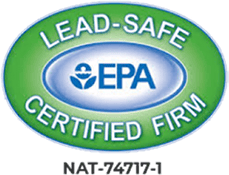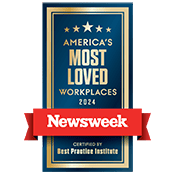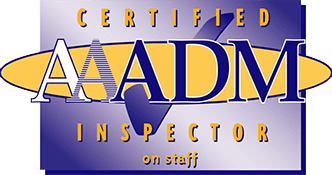Rolling Doors vs. Sectional Steel Garage Doors
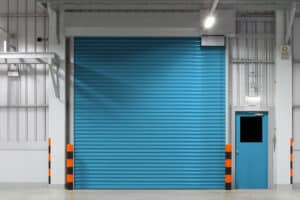
Doors play a critical role in your building and your business. Besides controlling access, they also help manage traffic, reduce energy costs, and enhance the efficiency of your operation. When considering garage doors specifically, there are several types available for commercial and industrial applications. However, rolling and sectional steel doors offer the most convenience, durability, and efficiency for warehouses, loading docks, and shipping centers. That said, the choice of a rolling steel door vs. sectional steel garage door is not always easy. Each has its own advantages. Read our brief guide to help you decide which one is right for your business.
Overhead Door Design and Operation
Commercial overhead doors are high-performance systems, made to operate in a wide-range of environments. Built for reliability and ease of use, their simple design allows you to maximize floor space and facilitate the movement of goods, vehicles, and equipment.
Rolling Garage Doors
Also known as overhead coiling doors, roll-up doors are designed with a small footprint, making them a space-saving option for facilities with limited headroom. Basic components include:
- Curtain. A series of interlocking slats that form the door itself.
- Drum. Located above the entrance. When the door is opened, the curtain rolls up into the drum and coils around the barrel assembly – a steel tube or pipe that spans the entire length of the entryway.
- Hood. A protective covering that conceals the drum and barrel assembly. Besides shielding it from the elements (rain, snow, etc.), it also dampens the noise produced when the door slides open and shut.
- Guide Tracks. Installed on either side of the door, to direct it while it’s being rolled up and down.
- Bottom Bar. The horizontal bar at the bottom of the door, built to absorb impact and also used for locking and sealing.
Doors that operate manually also include a counterbalance spring, to help lift and support the doors’ weight. On the other hand, if the door is mechanically powered, it will include a motor attached to the door shaft inside the drum, allowing you to raise and lower the curtain with the push of a button.
Sectional Garage Doors
Instead of swinging out like traditional one-piece garage doors, sectional doors operate vertically, sliding up and overhead, parallel to the ceiling. As a result, they require ceiling space equal to the height of the door itself. Before installation, owners have to account for lighting, sprinklers, and HVAC equipment. However, because there is no swing area, it enables businesses to make better use of the floor space in front and behind the door at the same time. Sectional doors consist of:
- Panels. Horizontal sections that make up the door.
- Hinges. Connect each section, allowing the door to pivot and bend as it moves.
- Guide Rails. Vertical and horizontal tracks that guide the door as it’s raised or lowered into position.
- Rollers. Wheels attached to the side of each panel that facilitate smooth movement along the tracks.
- Lock. Secures the door when not in use, preventing unauthorized access to your facility.
Like roll-up doors, sectional doors are motorized or manually operated. Manual doors are equipped with torsion springs that counterbalance the doors’ weight and make them easier to open. Motorized doors have a control system mounted to the ceiling, controlled by a wall switch near the entrance. Safety sensors along the floor prevent the door from closing on anyone or anything that might be passing through.
Strength, Insulation, and Cost
Space is the main difference between rolling and sectional doors. Rolling doors are more compact, which makes them easier to fit into a commercial or industrial workspace. Sectional doors, by contrast, require more planning to prevent them from interfering with existing equipment.
Rolling steel doors also typically have a longer lifespan than sectional steel doors, due to their simpler design. While both are incredibly strong and weather resistant, sectional doors are more complex. Their system of hinges and rollers is less resilient. As a result, while a rolling steel door normally lasts 20-30 years, a sectional door only lasts around 20-25.
At the same time, sectional steel doors have lower upfront costs due to their design and construction. Manufacturing panels is generally cheaper than manufacturing a steel curtain of the same size. Installation is faster and less complicated as well.
Weather is another important factor. Steel resists corrosion and is a poor heat conductor, which helps minimize energy loss to the outside environment. However, it doesn’t perform well in extreme temperatures without additional insulation, such as polyurethane or polystyrene.
While adding an additional layer of insulation between the panels or slats is easy, it can make the door over an inch thicker in some cases. Though this may not sound like much, it can increase the diameter of a rolling door coiled by over a foot when it’s coiled up inside the drum – significantly increasing the necessary headroom. By contrast, installing a heavily insulated sectional door doesn’t require significantly more equipment than a standard one.
Maintenance and Service
All commercial and industrial doors require professional support in order to function reliably. Even though they’re built to withstand repeated impacts, heavy use and exposure to the elements can strain their components. Regular inspections and preventative maintenance helps prevent unplanned downtime.
Vortex inspectors are trained to identify worn parts before they break down. By replacing and repairing critical components, our technicians ensure the door is safe to operate, helping you avoid potential accidents and security risks that could damage your business and endanger your employees. This proactive approach not only extends the lifespan of your doors; it reduces lifetime costs as well. Get the most from your doors. Contact us today to schedule your inspection.

